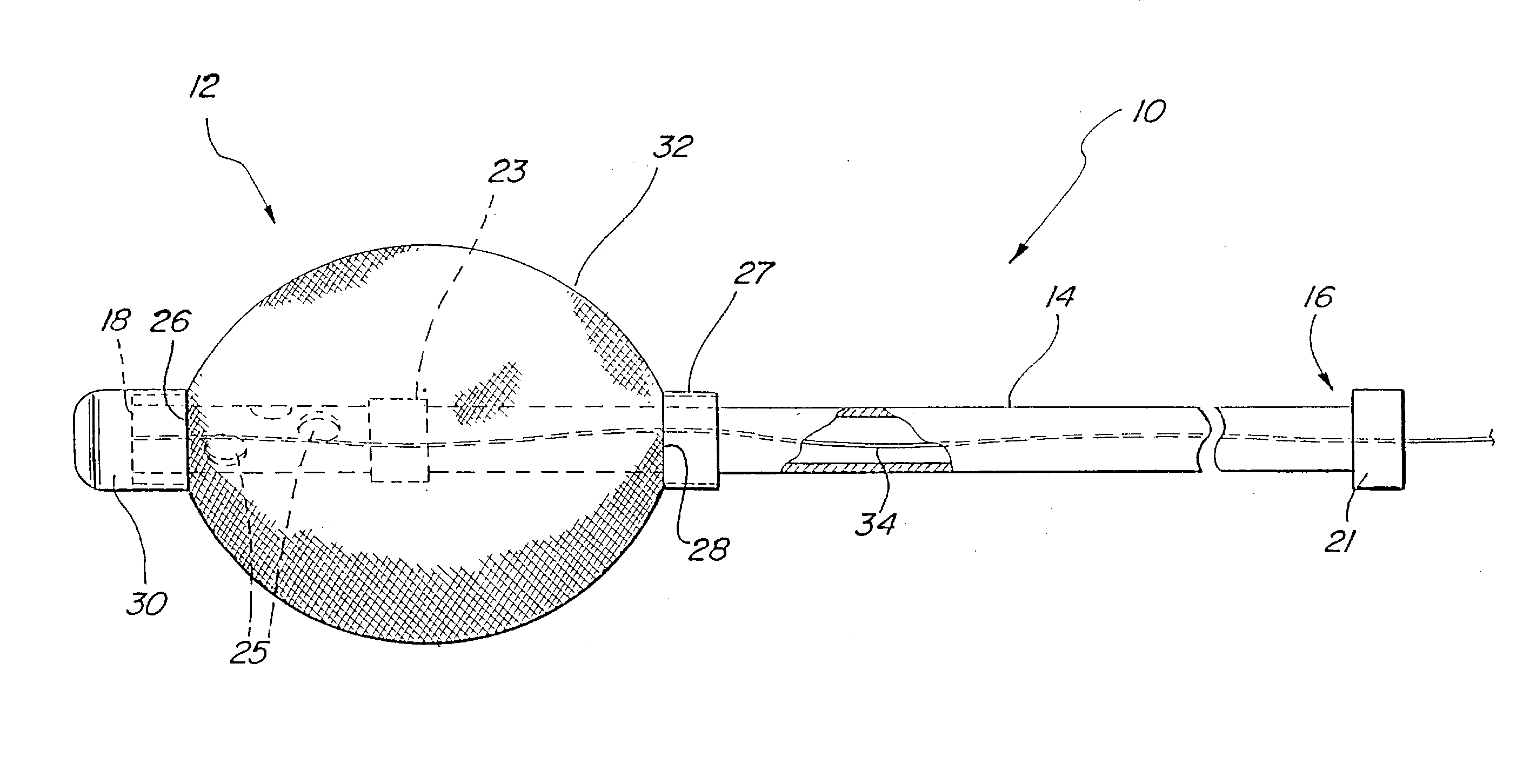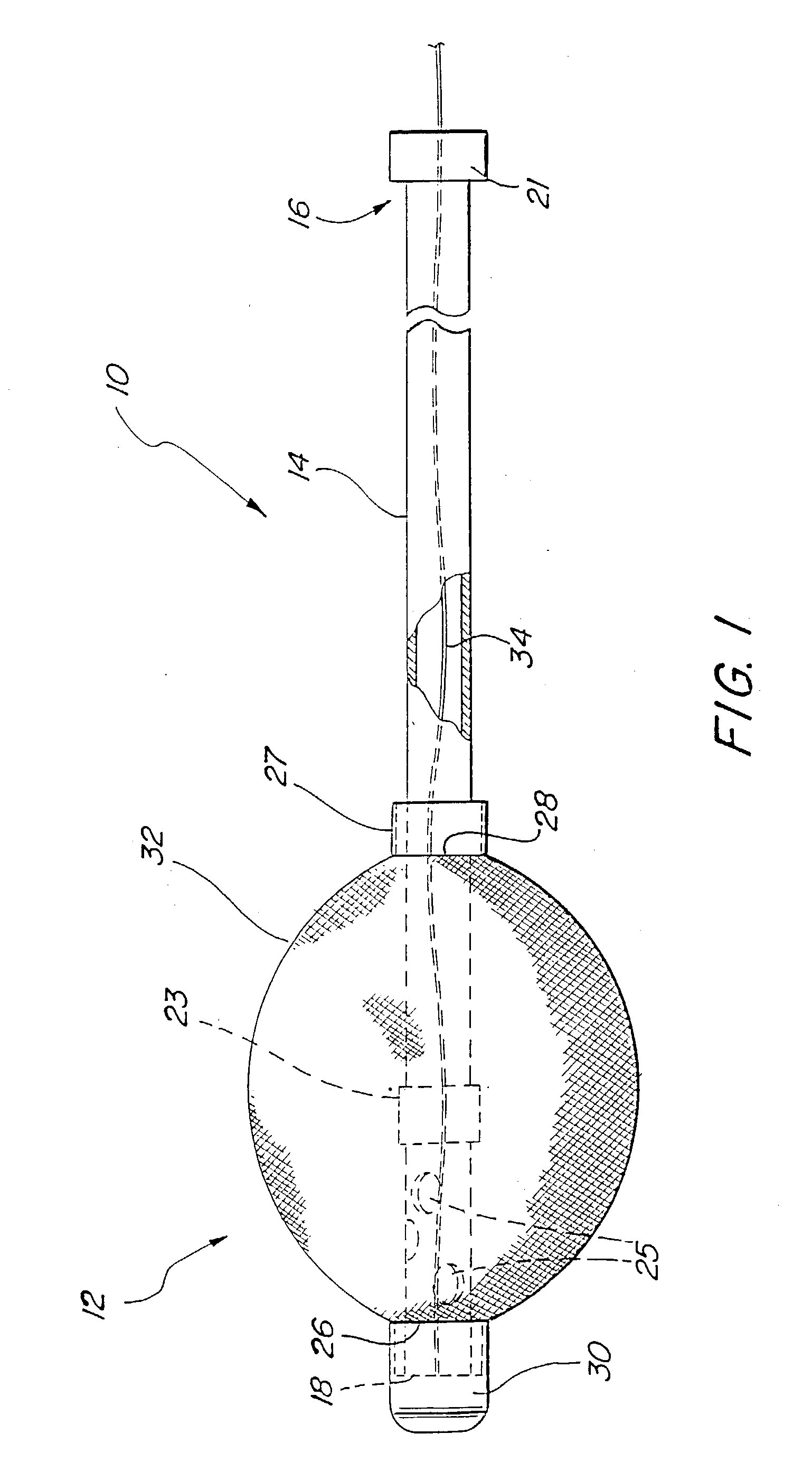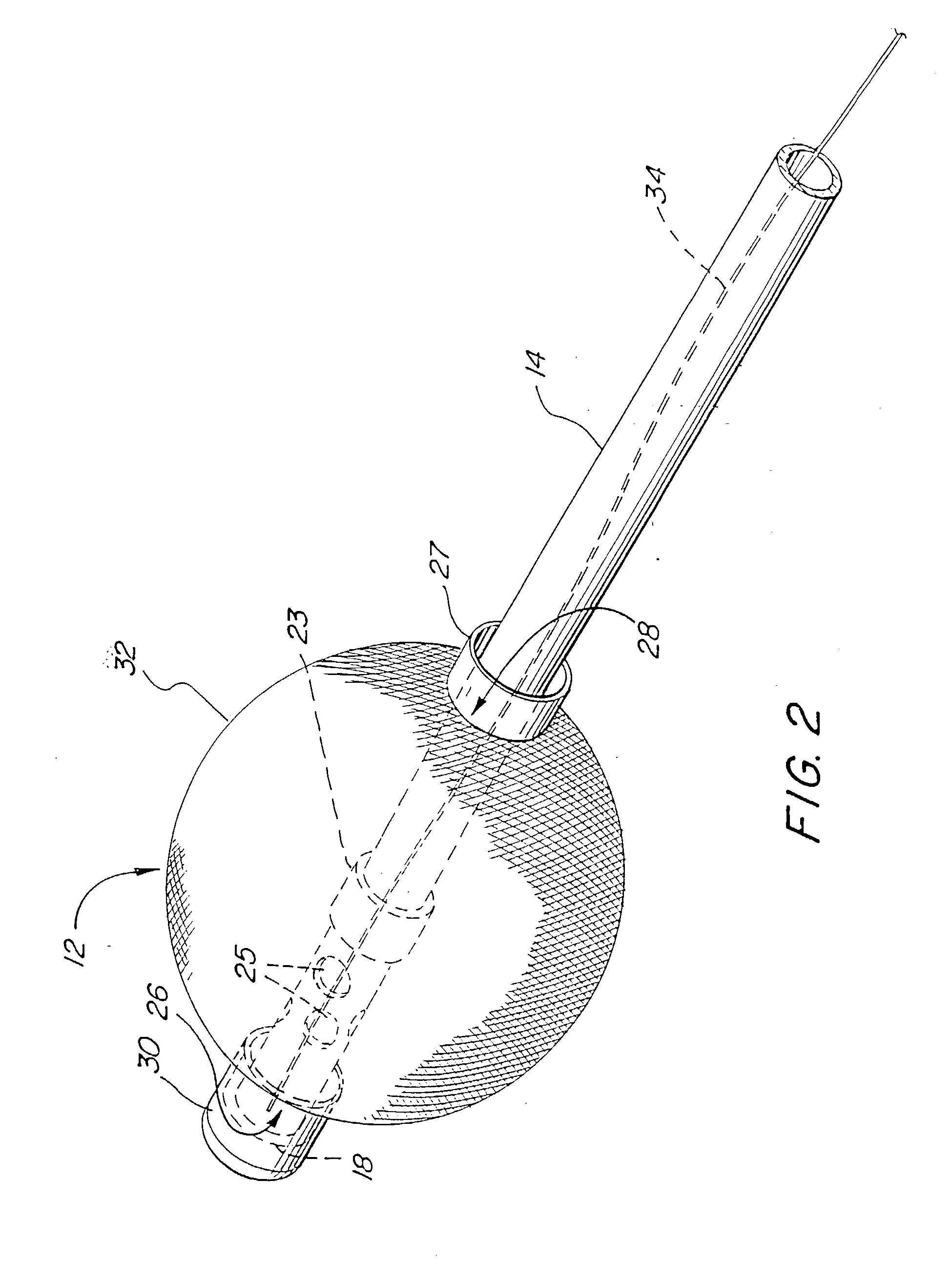Self-deploying catheter assembly
a self-deploying, catheter technology, applied in the direction of balloon catheters, catheters, surgery, etc., can solve the problems of increased discomfort, increased catheter diameter, and increased risk of kinks in the lumen of a small diameter
- Summary
- Abstract
- Description
- Claims
- Application Information
AI Technical Summary
Benefits of technology
Problems solved by technology
Method used
Image
Examples
Embodiment Construction
[0054] The invention and its various embodiments can now be better understood by turning to the following detailed description wherein illustrated embodiments are described. It is to be expressly understood that the illustrated embodiments are set forth as examples and not by way of limitations on the invention as ultimately defined in the claims.
[0055] A first preferred embodiment of a catheter assembly is illustrated in FIG. 1 and designated generally by the reference numeral 10. This catheter assembly, or simply catheter 10, has a self-deploying tip, or anchor assembly 12, which can be advantageous in many catheter configurations. In FIGS. 1 and 2, the catheter 10 is adapted for urinary drainage where the anchor assembly 12 facilitates insertion of the catheter 10, automatic deployment of the tip 12, and simple removal of the catheter 10. Other catheters which can benefit from the serf-deployment properties of the anchor assembly 12 include occlusion catheters, and generally any ...
PUM
 Login to View More
Login to View More Abstract
Description
Claims
Application Information
 Login to View More
Login to View More - R&D
- Intellectual Property
- Life Sciences
- Materials
- Tech Scout
- Unparalleled Data Quality
- Higher Quality Content
- 60% Fewer Hallucinations
Browse by: Latest US Patents, China's latest patents, Technical Efficacy Thesaurus, Application Domain, Technology Topic, Popular Technical Reports.
© 2025 PatSnap. All rights reserved.Legal|Privacy policy|Modern Slavery Act Transparency Statement|Sitemap|About US| Contact US: help@patsnap.com



